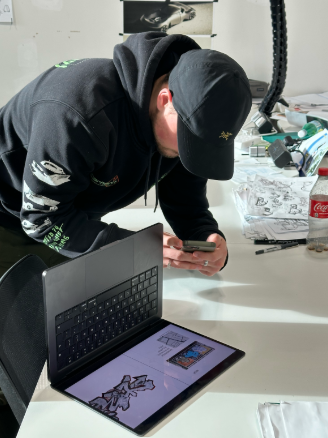
The Ultimate Guide to Mark-making in London: Exploring the Capital’s Street Art Scene and what it means for the community
OVERVIEW
This project investigates the cultural, social, and environmental significance of mark-making in present-day London.
We explored how AI and digital technologies intersect with graffiti, questioning whether machines can replicate the human drive behind street art. Graffiti is more than just mark-making— it is an act of defiance, a way to reclaim public space, and a medium of communication.
MY ROLE
Across RCA, team module
TOOLS
Adobe Aero, InDesign, Polycam(3D scanner)
TIMELINE
September 2025 - March 2025
Context
This project investigates the cultural, social, and environmental significance of mark-making in present-day London.
We explored how AI and digital technologies intersect with graffiti, questioning whether machines can replicate the human drive behind street art. Graffiti is more than just mark-making— it is an act of defiance, a way to reclaim public space, and a medium of communication.
We created a book as a guide to mark-making, documenting Bethnal Green’s graffiti culture and its role in self-expression, resistance, and community dialogue.
Communication
vs
Graffiti
vs
Digitalization
Process
We initially documented local mark-making through photographs and experimental 3D scans of various graffiti.



Process - Case Study in Bethnal Green
We installed a canvas as a ‘blank wall’ for graffiti tagging at Rose Easton, a graffiti-heavy building, documenting the process with a motion-detection camera. As part of a participatory experiment to observe how local artists engaged with it. Initially denied permission elsewhere, but were confronted by the building’s leaseholder, a former writer—who allowed the canvas to stay for a week.



Outcome - a guide to mark making in London

Transparent Sheets to Imitate Overlaying Graffiti

Experimenting on Book Cover Designs
Process - Augmented Reality (AR)
In the book, we incorporated AR as a tool for viewing graffiti in 3D, prompting discussions about the contrast between digital and physical experiences. We conducted 3D scans of the mark-making and converted them into QR codes. This allows readers to engage with the graffiti in an interactive format rather than just a static 2D representation.






Snippets of the book